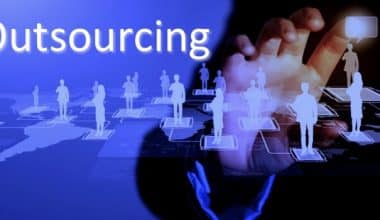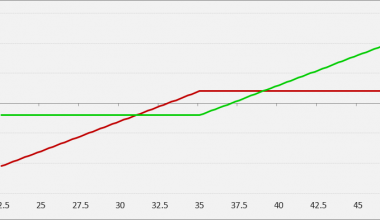Employee disengagement accounts for the majority of losses for most businesses. Most companies introduced Employee Stock Ownership Plans(ESOP) to motivate employees. The ESOP allows employees to own stocks in the companies they work for. Now, what does ESOP mean, and how you check if your company has one? Read on.
What Does ESOP Mean?
ESOP means employee stock ownership plans. It is a type of employee benefit plan that gives employees stock ownership. Employee stock ownership plans (ESOP) provide various tax benefits to the sponsoring company, the selling shareholder, and participants, making them qualified plans, and are frequently used by employers as a corporate finance strategy to align the interests of their employees with those of their shareholders.
How Does An ESOP Work?
An ESOP is typically established to facilitate succession planning in a closely held company by allowing employees to purchase corporate stock shares.
Companies can fund ESOPs by putting newly issued shares into them, putting cash in to buy existing company shares, or borrowing money through the entity to buy company shares. Companies of all sizes, including several large publicly traded corporations, use ESOPs.
Contrary to popular belief, companies with an ESOP must not discriminate and must appoint a trustee to act as the plan’s fiduciary. It is not possible, for example, for senior employees to receive more shares or for ESOP participants to have no voting rights.
What Does an ESOP Look Like?
Consider a five-year employee at a large technology company. They have the right to receive 20 shares after the first year and 100 shares total after five years under the company’s ESOP. When the employee retires, they will receive the cash value of their shares. Stock ownership plans may include, among other things, stock options, restricted shares, and stock appreciation rights.
The Benefits of ESOPs
Companies can use ESOPs to keep plan participants focused on corporate performance and share price appreciation because ESOP shares are part of the employee’s remuneration package. These plans allegedly encourage participants to do what’s best for shareholders by giving plan participants an interest in seeing the company’s stock perform well because the participants themselves are shareholders.
Meanwhile, employees can earn more money, increase their pay, and be rewarded for their hard work and dedication. Employees should feel more appreciated and excited to come to work if they have a stake in the company.
Employee stock ownership plans incentivize employees to give their all, benefiting all parties.
ESOP Initial Costs and Distributions
Companies frequently provide such ownership to employees at no cost. The company may place the provided shares in a trust for the employee’s protection and growth until the employee retires or resigns.
Companies typically tie plan distributions to vesting, which grants employees rights to employer-provided assets over time; normally, employees earn an increasing proportion of shares for each year of service.
Vesting can occur suddenly, after a set number of years (cliff), or gradually over time (graded).
When a fully vested employee retires or resigns from the company, the company “purchases” its vested shares. Depending on the plan, the money is paid to the employee in a lump sum or equal periodic payments.
The company redistributes or voids the shares after purchasing the shares and paying the employee. Employees who voluntarily leave the company cannot take their shares of stock with them, only their cash payment.
Companies With ESOP
Here are some companies that have ESOP plans.
#1. Publix Super Markets
Publix Super Markets is the country’s largest employee-owned company, with 1,272 store locations and over 225,000 employees. The company reported retail sales of more than $44.9 billion in 2019, an increase of nearly 18% over the previous year. According to Forbes magazine, this makes the company the fifth-largest privately held company in the United States in 2019 (the most recent figures available as of July 2021).
George W. Jenkins founded the company in 1930 and it gradually grew into the most profitable supermarket chain in the country. After working for the company for more than 12 months, all Publix employees, regardless of position, receive company stock.
#2. Penmac Staffing
Penmac Staffing is a temporary staffing agency that connects job seekers with employers. Patti Penny founded the company in 1988 in Springfield, Missouri, intending to find temporary employees for the company that employed her husband. The company grew from a single small office to 32 branch offices in eight states over the years. They now serve over 1,200 corporate clients. Penmac is the country’s second-largest employee-owned company, according to the National Center for Employee Ownership (NCEO), with 28,000 employees as of July 2020, the most recent figures available.
#3. Brookshire Brothers
Brookshire Brothers was the 13th-largest employee-owned company in the United States as of 2020, according to the NCEO’s 2019 ranking of employee-owned companies in the United States. It currently employs over 7,000 people and owns multiple grocery stores, gas stations, and convenience stores across Texas and Louisiana.
#4. WinCo Foods
WinCo Foods, formerly known as Waremart, began as a warehouse-style grocery store in 1967 in Boise, Idaho. With a focus on low prices, the company expanded and opened new stores, primarily in the Pacific Northwest. The company operates 131 employee-owned grocery stores and employs approximately 20,000 people.
Employees who have worked at least 500 hours in their first six months are eligible to participate in WinCo’s ESOP. They must work at least 1,000 hours per year to continue participating. WinCo’s ESOP is unique in that contributions are made by the company rather than the employee.
#5. Robert W. Baird & Co.
Robert W. Baird & Co. is yet another well-known employee-owned company in the financial industry. Baird invests in lower to middle-market companies across a wide range of sectors, primarily focusing on healthcare, industrial solutions, and technology. He invests in companies at various stages of development, from the concept stage to those with $150 million in revenue. Baird also offers wealth management and investment banking services to individuals and businesses and private equity financing.
#6. Recology
Recology is a waste management company based in San Francisco that employs 3.600 people. The company operates 45 locations in Washington, California, and Oregon, serving approximately 112,000 commercial and 889,000 residential customers. Recology is a 100 percent employee-owned company that started its ESOP program in 1986.
Their plan includes a 401(k) plan and a supplemental retirement plan for employees.
Why Are Companies With ESOP Successful?
Employee-owners approach their company, job, and responsibilities differently, allowing them to work more effectively and increasing the likelihood that their company will succeed. Employee-owners are more accountable for their own and their coworkers’ job performance because they share a common stake in the success of their company.
How To Check My ESOP?
It can be difficult to understand what is in your ESOP account and the rules for when and how you will receive it. While there are general rules that all ESOPs must follow, plans differ. The company is required by law to distribute your account balance no later than a certain time after you leave, depending on your age and whether you die or become disabled, as described below. It should be noted that some plans allow for earlier distribution. Read the Summary Plan Description provided by your company to learn about your plan’s rules. If you don’t have one, request one from your human resources department.
When Will You Receive Your Distribution After Leaving Your Job?
After leaving a job, you typically receive ESOP benefits. The following are the fundamental ESOP rules:
- The “plan year” is the ESOP’s annual reporting period, which may or may not correspond to the calendar year, such as July 1 to June 30. The “normal retirement age” of the plan cannot be later than 65, or, if later, the fifth anniversary of participation in the plan.
- If you leave because you reached the plan’s normal retirement age, became disabled, or died, distributions must start the following plan year. This means that your distribution could begin as soon as you leave or as late as almost two years later, depending on the timing.
- If you leave for another reason (for example, quitting or being fired), distributions must begin no later than six years after the plan year in which you left.
The ESOP loan exception, which is available in C corporations and, in some interpretations, S corporations: If you have shares in your account that were purchased with a loan taken out by the ESOP that is still being paid for, the start of distributions on those shares may be delayed until the plan year after the loan is fully repaid. However, these distributions must be completed by the later of the plan year following the loan’s full repayment or the date they would have been completed otherwise.
Distributions may be made all at once (a “lump sum”) or in substantially equal payments made no less frequently than annually over five years. (This means that, counting the first year, there could be six annual payments.) The five years can be extended for huge balances (an indexed amount currently exceeding $1 million); the examples below assume smaller account balances.
Exemplifications of ESOP Rules
In 2022, you retired at the plan’s retirement age of 65, and the plan year ends on December 31. The plan must begin making distributions to you by 2023. They must be completed by the year 2028.
You retire in 2022 at 40, and the plan year ends on December 31. The plan may require you to wait until 2028 before beginning distributions. They must be completed by the year 2033.
An example of an ESOP loan exception: As in the preceding example, you retire in 2022 at the age of 40, but the ESOP purchased all of the shares in your account with a loan that will be repaid in 2033. In this case, the start of distributions under the ESOP loan exception can be delayed until 2034, the year after the loan was repaid. They cannot, however, be spread out over five years as most ESOP distributions can; instead, they must be completed in 2034, which is the later of the year after the loan was repaid (2034) and the year your distributions would have been completed if not for the ESOP loan exception (2033).
Employee Stock Ownership Plans(ESOP) and Other Forms of Employee Ownership
Stock ownership plans to offer packages that serve as additional employee benefits while also embodying the corporate culture that company executives want to maintain. Employee ownership can also take the form of direct-purchase programs, stock options, restricted stock, phantom stock, and stock appreciation rights.
Employees can use their personal after-tax funds to purchase shares of their respective companies through a direct stock purchase plan (DSPP). Some countries offer tax-qualified plans that allow employees to purchase company stock at a reduced price.
The restricted stock allows employees to receive shares as a gift or as a purchased item after meeting certain requirements, such as working for a specific period or meeting specific performance targets.
Employees can purchase stock options at a fixed price for a set time.
Employees who perform well are rewarded with phantom stock. These bonuses are equal to the value of a specific number of shares.
In addition, employees with stock appreciation rights can increase the value of an assigned number of shares. These shares are typically paid in cash by companies.
Is ESOP Good For Employees?
Yes, ESOPs are generally considered a benefit for employees. These programs are typically implemented by companies that do not frequently cut and replace employees, resulting in a larger payout and greater financial compensation for employees.
Is ESOP Better Than 401K?
Historically, ESOPs have had a greater rate of return, whereas 401ks have significantly more volatility due to the frequency of valuations and market swings.
In Conclusion,
ESOPs are generally beneficial to both employers and employees, as they encourage greater effort and commitment in exchange for greater financial rewards. They are, however, not always straightforward and can be frustrating if the participant does not fully comprehend the terms of their specific plan.
Not all ESOPs are created equal. The rules for actions like vesting and withdrawals can vary, and it’s essential to be aware of them to make the most of this benefit and avoid missing out on a large bonus.
Related Articles
- EXIT STRATEGIES: Examples and Best Strategies For Startups
- What happens to 401k when you quit: Best 2023 Practices (Updated)
- ROTH 401(K): Withdrawal Rules and Comparisons
- HOW TO MAKE MONEY IN THE STOCK MARKET: Detailed Guide






